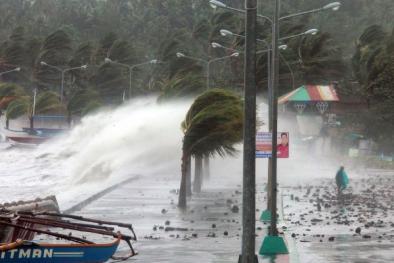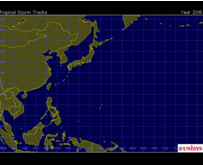Haiyan's Storm Surge: A Detailed Look

According to storm surge expert Dr. Hal Needham, the record highest storm surge in modern history in East Asia was 24 feet (7.3-meters) in 1897 on Samar Island, Philippines--the same location where Haiyan initially hit. He estimated that Haiyan's surge was very close to that at the Tacloban Airport: 21.3 feet (6.5 meters).
Storm chaser Josh Morgerman of iCyclone.com rode out the storm in a hotel a mile northwest of the airport, where the surge may have been even higher, due to the shape of the coast. He stated in an email to me that "we determined our location to be at 26 ft (based on USGS data), and we flooded to a depth of about 4 ft, suggesting a whopping 30-ft surge. (Afterward, I had a geography expert research this, and he came up with the same value for our location—8 m or 26 ft.)"
A storm surge of 21 - 30 feet hitting densely populated Tacloban, which did not fully evacuate low-lying areas, was bound to cause thousands of deaths.
"You know the more I reflect on the surge damage from STY Haiyan the more I realize this is an enormously extensive surge. Even considerably far north of the eye along Eastern Samar's Pacific coast water came inland with enough height and velocity to destroy all coastal towns. And in the Gulf of Leyte, the surge damage along the coast was just as extensive and dramatic."
Hurricane scientist Margie Kieper
Related Content




